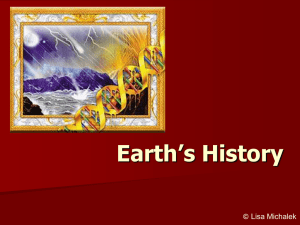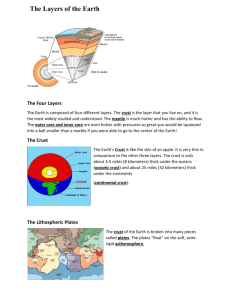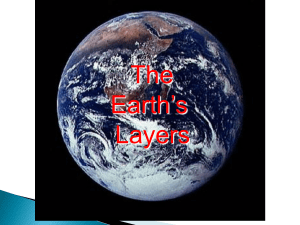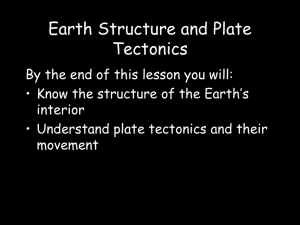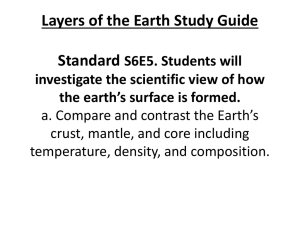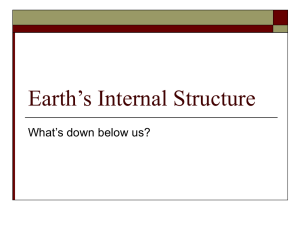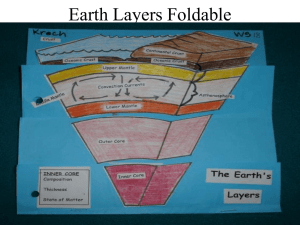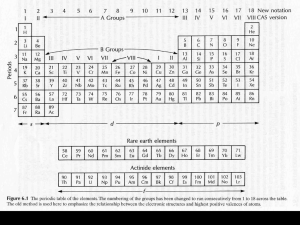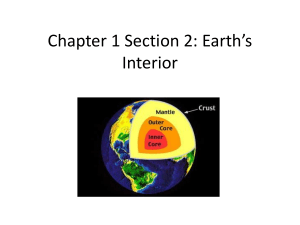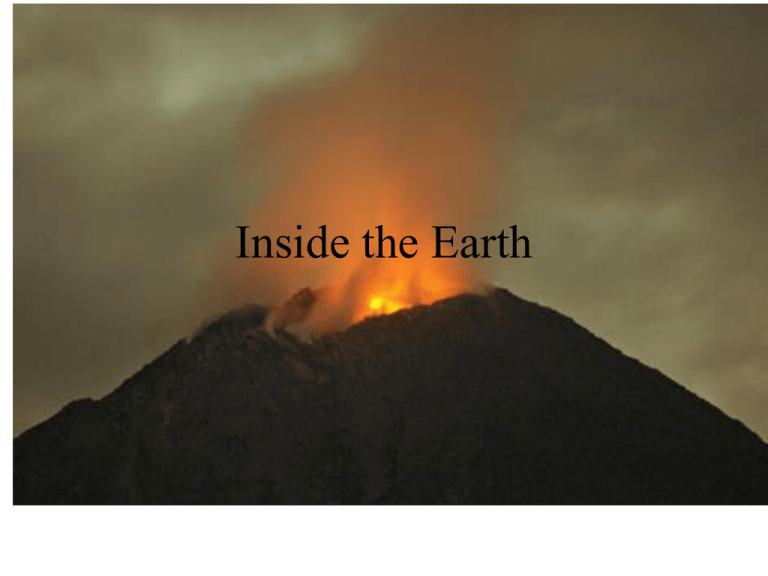
Inside the Earth
The Four Layers
crust - the layer that you live
on
mantle - much hotter and has
the ability to flow
outer core and inner
core - even hotter with
pressures so great you would
be squeezed into a ball smaller
than a marble if you were able
to go to the center of the Earth!
The Crust
• Outer layer
• 5- 75 km thick
• 2 types of crust
– Oceanic
– Continental
Oceanic and Continental Crust
2 Types of Crust
continental crust (mostly made of granite)
oceanic crust (made of basalt)
Basalt is much denser than the granite. Because of this
the less dense continents ride on the denser oceanic
plates.
The Lithosphere
The crust and the upper layer of the
mantle together make up a zone of rigid,
brittle rock called the Lithosphere.
The Lithospheric Plates
The crust of the Earth is broken into many pieces called
plates. The plates "float" on the soft, semi-rigid
asthenosphere.
The Asthenosphere
The asthenosphere
is the semi-rigid
part of the middle
mantle that flows
like hot asphalt
under a heavy
weight. (think
silly putty)
Mohorovicic discontinuity
• The boundary
between the
crust and
mantle
• More
commonly
called “The
Moho”
The Mantle
• largest layer of the
Earth
• Approx. 2900 km.
thick
• Composed of ironmagnesium silicates
• 2 parts
– Upper mantle – solid
– Lower mantle -very
hot dense rock that
flows like asphalt
under a heavy weight
(viscious liquid)
Convection Currents
The middle mantle "flows"
because of convection
currents.
Convection currents are
caused by the very hot
material at the deepest part
of the mantle rising, then
cooling and sinking again -repeating this cycle over
and over.
Convection Currents
The next time you heat
anything like soup or water
in a pan you can watch the
convection currents move
in the liquid. When the
convection currents flow in
the asthenosphere they
also move the crust. The
crust gets a free ride with
these currents, like the
cork in this illustration.
Core
• Outer Core
• Inner Core
The Outer Core
.
• 2300 km. thick
• Composed of ironnickel metals
• Metals are in a liquid
state due to intense
heat and pressure
• Movement of outer
core causes our
earth’s magnetic field
The Inner Core
The inner core of the
Earth has temperatures
and pressures so great that
the metals are squeezed
together and are not able
to move about like a
liquid, but are forced to
vibrate in place like a
solid.
• 1200 km. thick
• Composed of iron
• Pressure and heat so
intense that can’t flow
like a liquid so is a
solid
The Layers of the Earth
© Copyright 2006. M. J. Krech. All rights reserved.
Summary
• Earth’s crust is broken into pieces called
“plates”
• The plates are constantly moving because of
the convection currents of the mantle
• The movement of these lithospheric plates
is called “plate tectonics”



